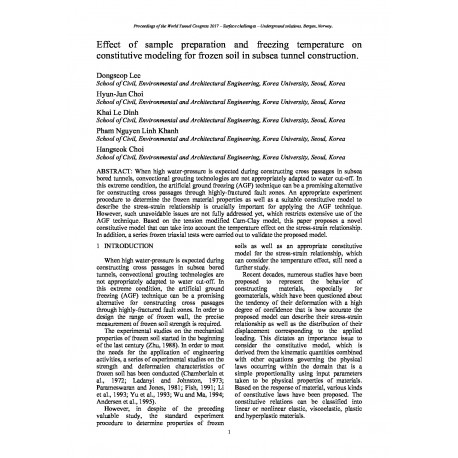Cart
0
0
No document
0,00 €
Total
Document successfully added to your shopping cart
Quantity
Total
There are 0 items in your cart.
There is 1 item in your cart.
Total documents
Total shipping
To be determined
Total
Search & filter
Search for a publication
Search & filter

Effect of sample preparation and freezing temperature on constitutive modeling for frozen soil in subsea tunnel construction
14944_effect_of_sample_preparati
H. Choi / D. Lee / H. J. Choi / K. Le Dinh / P. N. Linh Khanh
When high water-pressure is expected during constructing cross passages in subsea bored tunnels, convectional grouting technologies are not appropriately adapted to water cut-off. In this extreme condition, the artificial ground freezing (AGF) technique can be a promising alternative for constructing cross passages through highly-fractured fault zones. An appropriate experiment procedure to determine the frozen material properties as well as a suitable constitutive model to describe the stress-strain relationship is crucially important for applying the AGF technique. However, such unavoidable issues are not fully addressed yet, which restricts extensive use of the AGF technique. Based on the tension modified Cam-Clay model, this paper proposes a novel constitutive model that can take into account the temperature effect on the stress-strain relationship.



